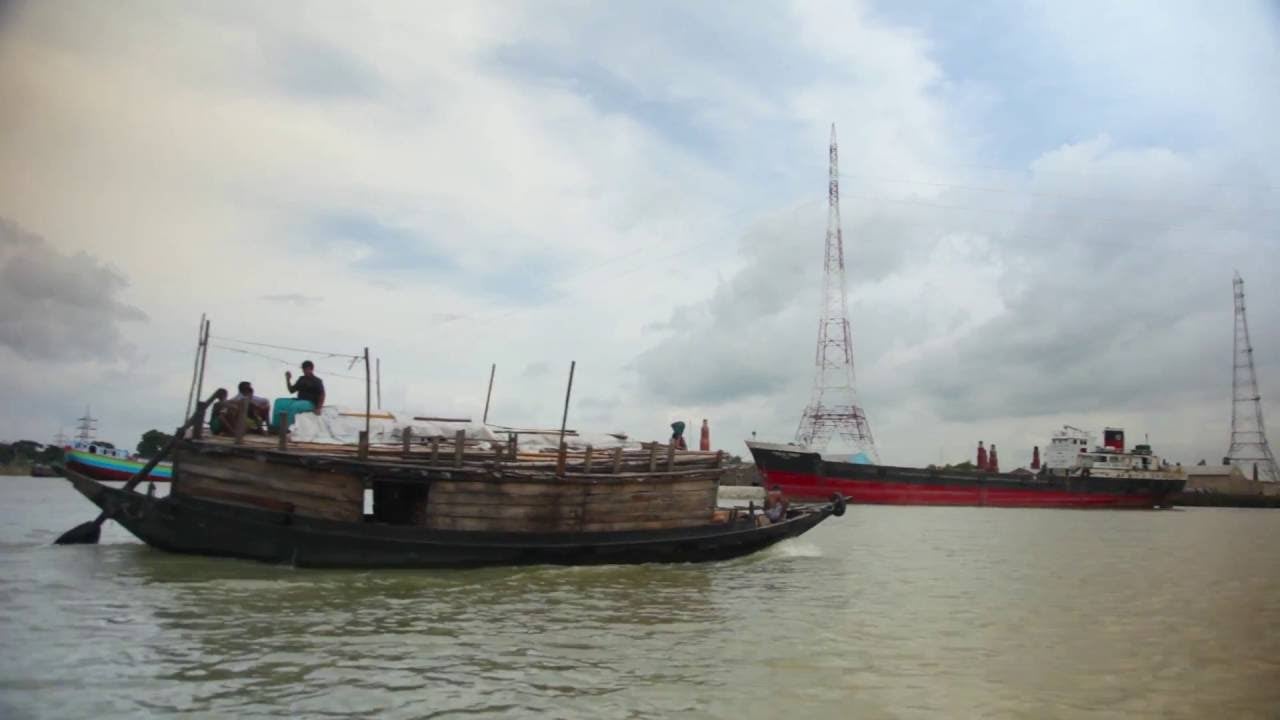
Transport history was in the making a few days ago when a Bangladeshi ship carried a consignment of
1,000 tons of steel and iron sheets from the Port of Kolkata in West Bengal to India’s northeastern states, through Bangladesh. This first-ever transshipment of transit goods marked the formal launch of transit trade and transport between India and Bangladesh using a combination of river and land routes.
Senior government officials and top diplomats from both countries, including the Indian High Commissioner in Dhaka, the Bangladesh Minister and Secretary of Shipping, the Senior Secretary of Commerce, and officials of the Bangladesh Inland Water Transport Authority, attended an inaugural ceremony to observe the unloading of goods at Ashuganj Port on the bank of the Meghna River, according to media reports. The general cargo terminal at Ashuganj Port will be rehabilitated and modernized under the newly approved regional IDA project to support Bangladesh’s waterways to handle the loading and unloading of large volumes of cargo.
The goods were later loaded onto trucks that took them across the border, through an 80-kilometer trip, to deliver them to warehouses in Tripura, India. This new arrangement will help cut the distance (by 1,100 km), travel time (from 30 to 10 days), and transport costs (from $67 to $40 per ton) between the two countries, while also boosting trade and creating jobs for the benefit of both.
To many, this may have seemed like just another infrastructure story. But the symbolic ceremony and last week’s World Bank Board approval of the Regional Waterway Transport Project for Bangladesh both signal the initial transformation of the waterway transport system in the two countries, and the sub-region.
The transformative dimension of this major waterway project, whose analytical work was supported by the UK’s DFID, lies in its potential contributions toward trade facilitation, regional integration, climate change mitigation and resilience, poverty reduction, and innovation. Let’s briefly elaborate on these points.
Improving trade conditions
As one of the most densely populated and climate-vulnerable countries in the world, Bangladesh faces huge challenges, including poor transport links which are a binding constraint to trade, growth and job creation.
Bangladeshi manufacturers have long complained that their ‘Order to Delivery Cycle’ is 35 to 50 percent longer than many of their global competitors. Thus, this regional waterway project aims to boost Bangladesh’s competitiveness by unblocking supply chain bottlenecks and improving multimodal transport and logistics systems in the country.
So the project goes beyond supporting infrastructure to supporting a waterway system that will improve the multi-modal logistics framework of the country and the sub-region.
Advancing regional integration
South Asia, the least integrated region in the world, will directly benefit from the regional focus on waterways. The project is kicking off a promising program of national and regional connectivity through inland waterways, with positive economic and environmental externalities beyond the borders of Bangladesh. Parallel investments, for example, are underway in India aimed at facilitating passenger and cargo movements between Bangladesh and India, and eventually with Bhutan and Nepal.
In fact, this waterway transport project is one of at least four that the World Bank plans to deliver in the next few years, including at least one more in Bangladesh and two in India. All these projects aim to support the implementation of the regional integration agreements between the BBIN (Bangladesh-Bhutan-India-Nepal) countries through enhancing waterways connectivity within the South Asian region.
With the signing of the revised Protocol on Inland Water Transit and Trade last June, both India and Bangladesh would use each other's territories for transiting goods to a third country. This deal enables Bangladesh to use Indian territories for transporting goods to Nepal and Bhutan. Similarly, India would access its landlocked states of Northeast India and Myanmar by crossing over Bangladesh.
Mitigating climate change
This project also aims to improve climate change resilience and mitigation, which are essential to the very survival of the Bangladesh delta. The project, for example, incorporates climate resilience into river port infrastructure and promotes the use of inland water transport, which emits less greenhouse gases than road transport.
Focusing on the poor
This project has a strong pro-poor dimension. The passengers using inland water transportation (IWT) are among the poorest in Bangladesh. Many live in remote locations that do not have access to any other modes of transport. They rely on water transport to go to school, hospitals, and to purchase food and consumer goods. Small traders also rely on IWT for their livelihoods, and to bring products to market.
Promoting innovation
This project also brings innovation and international best practice to Bangladesh, since it introduces performance-based contracts to make dredging more cost-effective and maintain the waterways for year-round day and night navigation. It will also be safer for women and less-abled users to travel along inland waterways through better river terminal designs and dedicated facilities.
In brief, this inland water project will provide a more effective and safer alternative mode of transport for both passengers and cargo. Millions of particularly low-income people will be able to reap the benefits from these improvements every year.
This is why unlocking the transformative power of waterways, through a system approach, will bring South Asia one step closer toward regional integration.
Click here to watch a video about the project



Join the Conversation